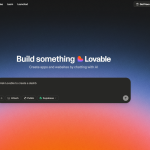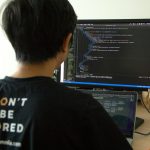Vibe Coding: The Future of Software Development
The world of programming is experiencing a seismic shift. Gone are the days when creating software required years of training in complex syntax and programming languages. Enter “vibe coding” – a revolutionary approach that’s transforming how we think about software development.
What Exactly is Vibe Coding?
Vibe coding represents a fundamental paradigm shift in software development. Instead of writing lines of code manually, developers describe their intentions using natural language, and AI transforms those descriptions into functional, executable code. The phrase started as a Silicon Valley buzzword (coined by AI expert Andrej Karpathy) but has quickly evolved into a legitimate development methodology.
Think of it as having a conversation with your computer about what you want to build. You might say, “Create a login form with email validation and password strength checking,” and the AI generates the complete code structure, styling, and functionality. Karpathy described his approach as conversational, using voice commands while AI generates the actual code.
The Power of Intent Over Implementation
Traditional programming requires developers to think in terms of loops, conditionals, and specific syntax rules. Vibe coding flips this on its head. It’s not about being lazy—it’s about focusing your time and energy on the creative aspects of app development, rather than getting bogged down in technical details.
This approach democratizes software creation in unprecedented ways. Vibe coding opens software creation to non-programmers and those with rusty coding skills. Product managers, designers, and business stakeholders can now directly participate in the development process without being bottlenecked by technical implementation details.
Breaking Down Barriers
The implications extend far beyond just making coding easier. It allows team members throughout an organization to create solutions without waiting for overburdened development teams. Marketing teams can prototype interactive campaigns, customer service can build internal tools, and entrepreneurs can validate ideas with functional prototypes.
The speed advantage is remarkable. It significantly accelerates early development and prototyping. What once took weeks of careful coding can now be accomplished in hours through natural language descriptions and AI assistance.
The Tools Making It Possible
Several platforms are leading the vibe coding revolution. Tools like Cursor, Replit, and specialized AI coding assistants are enabling this new development paradigm. These platforms provide environments where users can create code through prompts and see immediate results.
The technology leverages large language models (LLMs) that have been trained on vast amounts of code and documentation. This allows them to understand context, generate appropriate solutions, and even debug issues through conversational interactions.
Challenges and Considerations
While vibe coding offers tremendous promise, it’s not without challenges. The quality of output depends heavily on the quality of input descriptions. Vague or ambiguous instructions can lead to code that doesn’t meet expectations. Additionally, debugging and maintaining AI-generated code requires a different skill set than traditional programming.
There’s also the question of understanding what the AI has created. While you might not need to write the code, understanding its structure and logic becomes crucial for maintenance and optimization.
The Future Landscape
Vibe coding essentially represents the next step in the evolution of software development, where we describe intent rather than write code. This shift parallels how we moved from assembly language to high-level programming languages, each abstraction layer making programming more accessible and efficient.
As AI models become more sophisticated and better at understanding context, vibe coding will likely become even more powerful. We might see specialized AI agents for different aspects of development – one for UI design, another for database optimization, and yet another for security implementation.
Preparing for the Shift
For current developers, this doesn’t mean programming skills become obsolete. Instead, it means evolving to become AI orchestrator professionals who can effectively communicate with AI systems, understand their output, and guide them toward optimal solutions.
For non-developers, vibe coding represents an unprecedented opportunity to bring ideas to life without traditional technical barriers. This method focuses on solving problems rather than syntax details.
Conclusion
Vibe coding is more than just a trend; it’s a fundamental shift toward more intuitive, accessible software development. By focusing on intent and outcome rather than implementation details, it opens new possibilities for innovation and creativity.
As we stand at the threshold of this new era, the question isn’t whether vibe coding will impact software development, but how quickly and extensively it will transform the industry. The future of programming is conversational, and that conversation is just beginning.
The tools are ready, the AI is capable, and the potential is limitless. Whether you’re a seasoned developer or someone with a great idea but no coding background, Vibe Coding offers a path to turn concepts into reality through nothing more than clear communication and creative vision.


